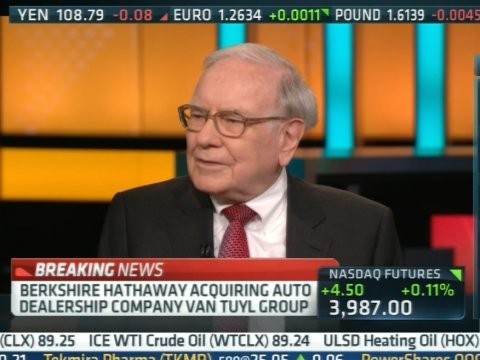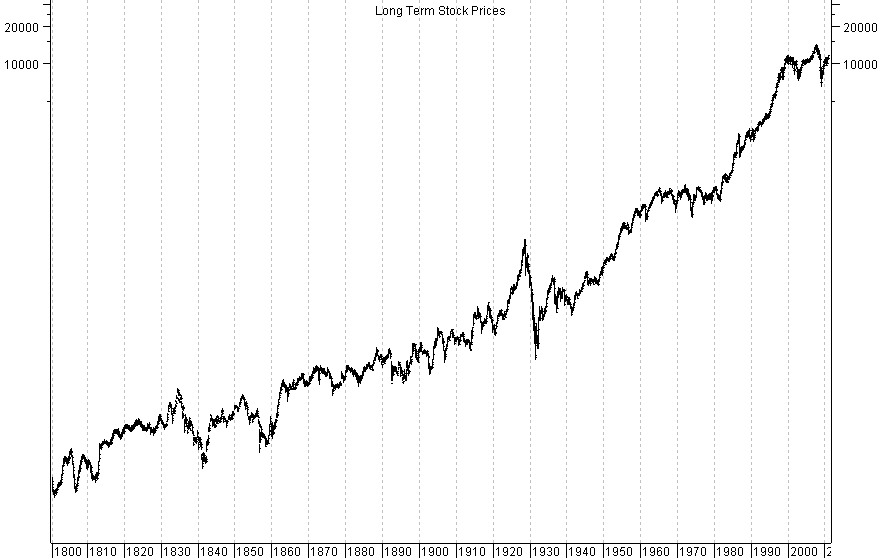How to read a 10K like Warren Buffett
Post on: 21 Июнь, 2015 No Comment

If you think you can be a great investor, you’d better enjoy working with one of the principal tools of the trade: the 10-K. Berkshire Hathaway’s Warren Buffett has said he loves to curl up with companies’ annual reports. When asked how to get smarter, Buffett once held up stacks of paper and said he read 500 pages like this every day. That’s how knowledge builds up, like compound interest.
26ISO | E+ | Getty Images
Individual investors may not have the same advantage as a fund manager, who looks at hundreds of these filings year after year. So to help the individual investor know what to look for when considering stocks for their portfolio and when reviewing the outlook for current stock holdings, CNBC interviewed three experts from major fund companies: Christopher Bartel, head of global equity research at Fidelity Investments, who oversees a team of 136 analysts covering 2,236 companies; Daniel Kane of the three Artisan Partners Asset Management Value Funds, a group that has been recognized by Lipper and Institutional Investor in recent years for its performance; and W. Lee Norton, a senior investment analyst in Vanguard Group’s portfolio review department.
A final word to the wise: If you don’t enjoy the depth of research described by these managers, you might want to consider whether stock picking is the best use of your time. You probably won’t be a great investor unless you love 10-K’s enough to want to read them on a plane trip.
We all love it, Kane said. It’s a passion we have. When we hop on a plane, we take a 10-K along. We stuff a few in the bag and go.
What is the most telling part of the 10-K?
Bartel said the Management Discussion and Analysis, or MD&A, is where the company will talk about everything from the financial requirements to exposures to different types of risks. You start to put together how the company works. I can anticipate how the company starts to perform in different environments, because I know what the levers are.
The chairman’s letter is a good place to begin, Kane said. Reading those throughout the course of time really gives you an insight. I read at least 10 years of 10-K’s. Did management execute and implement those strategies? Did they fail? When you find a management team that’s willing to give you the unvarnished truth, you get a good idea of how transparent they are.
Kane is a footnote hawk, too. He said it’s in the footnotes that the company will give you a good description of their debt—the term, structure and different components of debt. You’ll also find information about the company’s off-balance sheet liabilities, operating leases, legal liabilities and potential M&A earnouts—future payments promised to former owners of acquired businesses based on sales targets.
The risk factors section of the 10-K is one of the most potentially useful sections in highlighting areas in which many investors may not be fully aware, Norton said. Most of the language is standard risks, but discussion of client concentration or dependence on a certain product may be not as well understood. I looked at Target’s 10-K, and significant data security breach is highlighted as a risk factor! Norton said.
Where else should you go 10-K hunting?
The cash flow statement is the truth serum, Bartel said, pointing to WorldCom as a classic example. They reported tremendous income growth, he said, but if you looked at cash flow net of investing, they were actually hemorrhaging cash. If they’re reporting cash flow from operations that’s below the net income, he explained, you have to ask what the company is having to invest to achieve that cash flow.
You think you can borrow money forever and continue to grow? Ultimately you’re going to just run out of money, Bartel said. But for a time, you can look great.
The properties section reported can be helpful in identifying hidden assets where the current value is not reflected on the balance sheet, Norton said. And legal proceedings is important because the risk from any outstanding lawsuits are downplayed publicly but given more direct treatment here. Anything the company lists as potentially having a ‘material’ impact should be fully explored, Norton explained.
Kane went even further on the subject of digging into risk factors. What he finds most interesting is the change in prioritization of risk factors. He gave as an example Lululemon, the maker of yoga pants. In 2011 one of the risks was maintaining the value of the brand. Risk No. 9. In 2012 that became risk No. 1, Kane noted.
In 2013 Lululemon had a major problem with one of their lines of yoga pants when users complained that the pants became transparent when stretched—it cost the chairman of the company his position after he tried to downplay the issue. It was also one of the key items that affected the stock price. But Kane said it wasn’t necessarily all negative. That’s sort of transparency two ways. Because they made changes to address it, in essence it probably was a good sign [they were aware of the risk].
And don’t forget about market risks. The quantitative and qualitative disclosures about market risk can be helpful, particularly for a commodity price–sensitive company. If you are looking at a trucking company, for example, it could give you a sense of how a certain change in gasoline prices could impact earnings.
What are some big red flags in a 10-K?
A company whose message is changing from year to year is never a good sign. New risk factors, for example, are a red flag, Bartel said. Say a big industrial company suddenly adds an environmental liability, like asbestos liability. Or it could be a patent lawsuit, he said, explaining, If there’s a change, that’s because the lawyers told them they had to put that in there.
You should also be wary anytime you see a change in the accounting practices. If it’s a more aggressive revenue recognition, that’s a real red flag, Bartel said. For example, an impairment charge, or a big change in reserves. That’s going to cause me to think: ‘They massively overpaid for that.’ It’s going to cause me to question that management team, he said.
Kane also has an eagle eye for any change in accounting principles. In today’s environment, companies report adjusted earnings. In the 10-K, earnings are re-reported and adjusted again. We call them ‘chiropractic reasonings,’ Kane said. The earnings are always adjusted for some reason or another. For instance, they’ll make an assumption about what the tax rate will be at the end of the year. At the end of the year, you might have to true those numbers up.

An obvious, and big, red flag is a change in auditors, Norton said.
Does it matter how much CEOs are paid?
The 10-K is accompanied by the proxy statement, which shows how much executives are compensated.
Yet it’s not the often headline-generating huge paycheck figure as much as the amount in which executives have invested personally in the company that is telling. That’s absolutely critical, Bartel said. Security ownership by senior executives shows if their interests are aligned with shareholders.
I would suggest investors never read a proxy before lunch, because it will ruin your appetite, Kane said. You can find some very interesting things.
Take compensation. They’ll give you a list of metrics. A growth company will give you things like, ‘We want to increase sales by 20 percent,’ Kane said. As value investors, Artisan is attracted to companies that have managers who are focused on factors such as cash flow, return on invested capital, and operating profit, he explained. You get what you incentivize people to do.
When it comes to executive perks, the ‘other’ category is useful for detecting abuse of company resources, such as aircraft, private cars and company real estate. Norton said this info was not disclosed as well in the past but now is much better. The certain relationships section can also be informative in disclosing any conflicts—for example, a company using a CEO’s brother as a big supplier.
Kane also likes to review the resumes of the management team for clues in the culture of how they manage a business. For instance, Apache is an oil and gas company. Anybody that’s worked at Apache over the course of their career is inculcated with a certain style of management that focuses on return on capital. They carry that with them wherever they go. If I see someone that worked at Apache, I know that’s a sign, Kane said.
Bartel agreed, claiming that researching the directors and their backgrounds can give you a sense of whether the company is being properly managed.
—By Elizabeth MacBride, Special to CNBC.com
Read more from CNBC Explains:
The basics of bonds and rates














